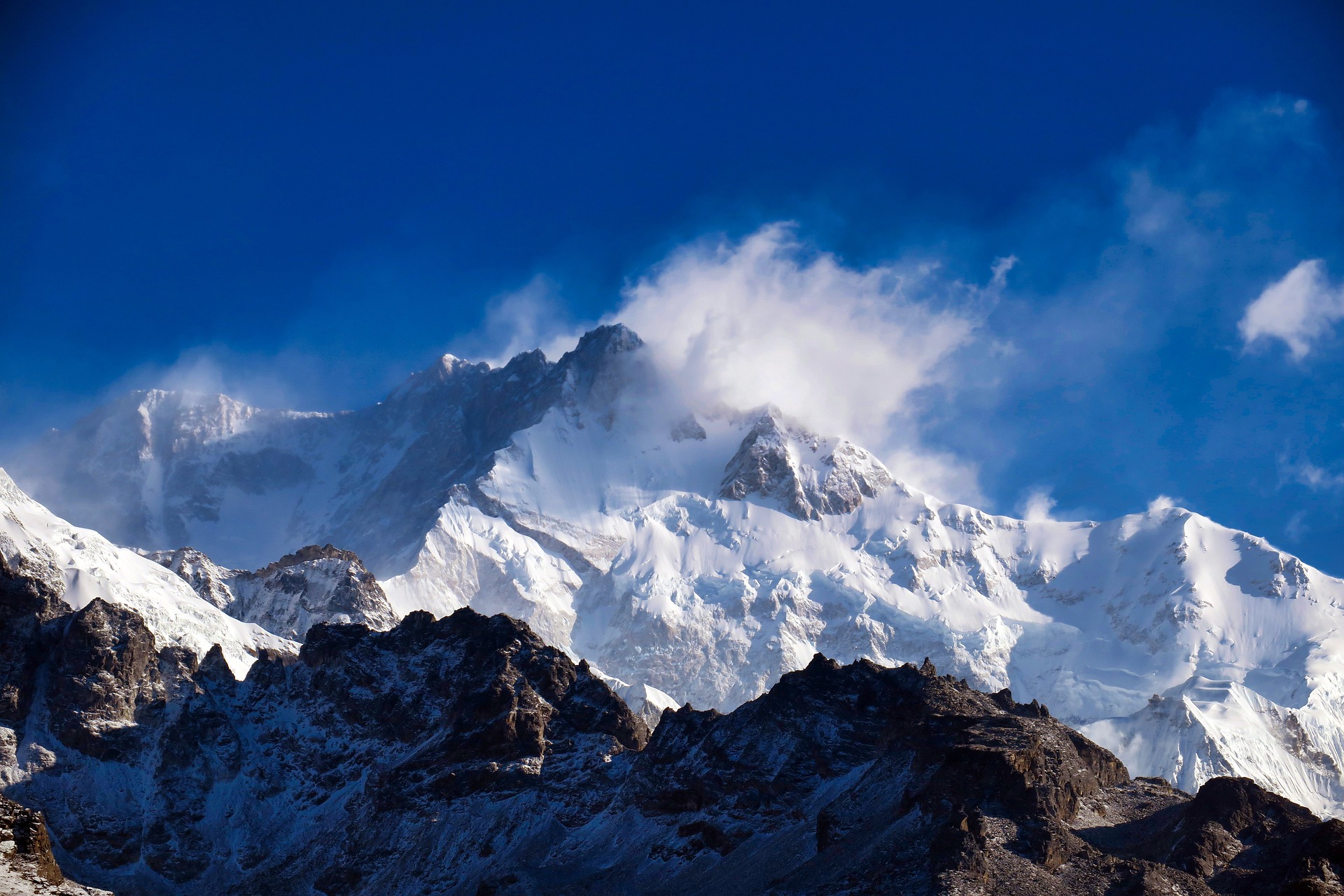Kanchenjunga, commonly known as the “Five Treasures of the Snow,” is the world’s third highest peak. It stands at an amazing 8,586 meters (28,169 ft). Kanchenjunga, located on the boundary between Nepal and the Indian state of Sikkim, is part of the Eastern Himalayan range. This spectacular peak, also known as Kanchenjunga Himal, is a natural wonder with profound cultural and spiritual importance for the local populations.
Table of Contents
Historical Significance
Kanchenjunga has attracted mountaineers and adventurers for ages. The first successful climb of this Peak was performed on May 25, 1955, by Joe Brown and George Band of a British expedition. Respecting local beliefs, they came to a halt a few meters short of the actual summit. Many climbers still follow this ritual to honor the mountain’s holiness.
Climbing Routes
The summit is accessible via several approaches, the most popular of which being the Southwest Face from Nepal and the Northeast Face from Sikkim.
Southwest Face
This is the traditional route, first taken by the British expedition in 1955. Climbers tackle difficult icefalls, steep snow slopes, and narrow ridges. The journey begins at the Yalung Glacier and continues up the West Ridge to the summit. This path provides a thorough Kanchenjunga trekking experience.
Northeast Face
This route begins in India and is less frequently attempted because to political constraints and logistical hurdles. It poses technical challenges with mixed climbing on rock, ice, and snow. This route is part of the Kanchenjunga Circuit trek.
Challenges and Dangers
Climbing Kanchenjunga is a daunting task laden with several challenges and hazards. Unpredictable weather, strong gusts, and heavy snowfall pose major concerns. The climb is technically difficult, requiring climbers to navigate complicated glaciers, steep ice walls, and exposed slopes. Avalanches provide a continual hazard, and the isolated location complicates rescue efforts. Furthermore, excessive altitude poses risks such as acute mountain sickness (AMS), hypoxia, and frostbite. These elements all contribute to the cost of climbing Kanchenjunga.
Cultural Significance
Kanchenjunga is very spiritually significant for indigenous populations, particularly the Sikkimese and Limbu people. The mountain, also known as Kanchenjunga Mountain, is regarded a sacred abode of the gods. Many ceremonies and festivities revolve around it. Before embarking on expeditions, climbers frequently seek blessings from local monasteries and take part in traditional rites to honor the deities believed to live in the mountain.
Conservation and Tourism
Kanchenjunga gets fewer climbers than Everest. It provides a more clean, less marketed experience. The Kanchenjunga Conservation Area in Nepal was established to preserve the region’s distinctive flora and fauna. Sustainable tourist practices are encouraged, along with strict waste management regulations and community-supporting activities. Many trekkers embark on the Kanchenjunga Base Camp Trek, which includes the Circuit, to see this stunning region.
Achievements and Records
This mountain has been linked to a number of important accomplishments throughout history. The first winter ascent was made by Krzysztof Wielicki and Jerzy Kukuczka in 1986. Benoît Chamoux completed the first solo ascent the same year. Ginette Harrison became the first woman to climb Kanchenjunga in 1998. Many other climbers have since established records on this tough peak. The difficulties of the climb, especially the high Kanchenjunga climb fee, make these accomplishments even more impressive.
Treks and Expeditions
Kanchenjunga offers a variety of trekking paths that highlight its magnificence to travelers who may not want to climb to the summit. The Kanchenjunga Circuit is a popular hike that offers breathtaking views of Himalaya Kanchenjunga and its surrounding peaks. Trekking programs frequently include trips to nearby communities, which provide an insight into the culture and lifestyle of the people who live in this remote area.
Planning Your Trip to Kanchenjunga
Planning a trip necessitates thorough preparation and consideration. The best times to visit are during the pre-monsoon (spring) and post-monsoon (fall) seasons, when the weather is generally stable. Trekkers should be aware of the trek cost, which varies according on the length, route, and quality of support necessary.
Conclusion
Finally, Kanchenjunga, with its majestic five summits, exemplifies the Himalayas’ grandeur and mystery. It continues to elicit amazement and reverence from climbers and locals alike. The journey to its heights, whether by Kanchenjunga Expedition or Trek, is a spiritual pilgrimage as well as a physical endeavor. It shows humanity’s strong relationship to the Earth’s towering titans. For those who brave its slopes, it provides not just a climb, but also an amazing experience that will go down in mountaineering history.

